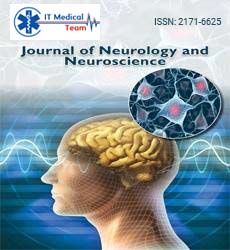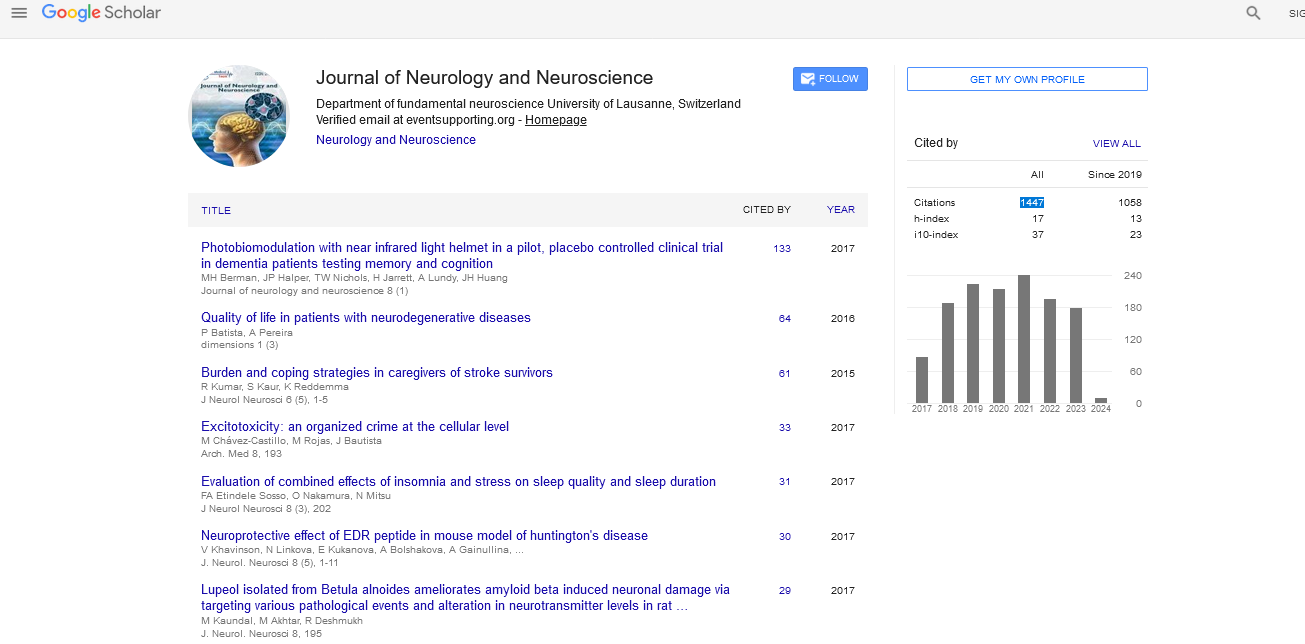Commentary - (2025) Volume 16, Issue 3
Developing Protocols for Imaging in Extended Thrombectomy Time Windows
Naulin Bererr*
Department of Neurology, Chonnam National University Medical School, Gwangju, Republic of Korea
*Correspondence:
Naulin Bererr, Department of Neurology, Chonnam National University Medical School,
Republic of Korea,
Email:
Received: 27-May-2025, Manuscript No. ipjnn-25-15714;
Editor assigned: 29-May-2025, Pre QC No. P-15714;
Reviewed: 12-Jun-2025, QC No. Q-15714;
Revised: 17-Jun-2025, Manuscript No. R-15714;
Published:
24-Jun-2025
Introduction
Mechanical Thrombectomy (MT) has revolutionized the treatment of Acute Ischemic Stroke (AIS) caused by Large Vessel Occlusion (LVO). Initially limited to patients within a 6-hour window from symptom onset, landmark trials such as DAWN and DEFUSE 3 extended the treatment window to 24 hours, provided that patients are selected based on favorable imaging profiles. This extension, while significantly improving the therapeutic reach of thrombectomy, introduced complex imaging protocols that require careful consideration. As the extended time window becomes more clinically accepted, the challenge lies in developing efficient, evidence-based imaging protocols that balance accuracy, accessibility, and timeliness of care. The DAWN trial demonstrated that patients with a mismatch between clinical severity (measured by NIHSS) and infarct core volume (measured via imaging) could benefit from MT up to 24 hours after symptom onset. Imaging was performed using MRI with Diffusion-Weighted Imaging (DWI) or CT Perfusion (CTP) interpreted with automated software like RAPID. DAWN used strict age and NIHSS-based criteria to define acceptable infarct core volumes (e.g., <21 mL for patients ≥80 years with NIHSS ≥10). In parallel, the DEFUSE 3 trial used CTP to quantify the ischemic core and penumbra and included patients within 6–16 hours of last-known-well who had a mismatch ratio ≥ 1.8, infarct core volume <70 mL, and penumbral volume ≥15 mL . Both trials showed a significant increase in the proportion of patients achieving functional independence at 90 days when treated with MT [1].
Description
Multiple recent studies have examined whether simplified imaging protocol such as non-contrast CT (NCCT) and CT Angiography (CTA) might be sufficient for selecting candidates in the 6–24 hour window. For example, a systematic review and meta-analysis, found no significant difference in clinical outcomes between patients selected with advanced imaging (CTP/MRI) and those selected with NCCT/CTA alone in the extended time window. Similarly, the RESCUE-Japan LIMIT trial and registry studies like ANGEL-ACT from China showed that outcomes for patients selected with basic imaging were comparable to those chosen with perfusion imaging, reinforcing the practicality of simplified protocols.
Based on this growing evidence, some stroke centers now employ a tiered imaging protocol for patients beyond 6 hours from last-known-well. This often begins with NCCT to rule out hemorrhage and assess for early ischemic changes using the ASPECTS score. Patients with ASPECTS ≥ 6 and LVO confirmed on CTA with favorable collateral circulation may proceed directly to MT, especially when advanced imaging is unavailable or would delay treatment. Collateral status on CTA, particularly multiphase CTA, has emerged as a valuable tool for estimating the extent of salvageable brain tissue. Studies have shown that good collaterals correlate well with smaller infarct cores and better outcomes after thrombectomy [2].
Despite these promising developments, there are still important considerations when moving toward simplified protocols. First, CTP and MRI provide quantitative assessments of infarct core and penumbra, offering a more precise selection of patients likely to benefit. This is particularly important in borderline cases where the risk of hemorrhagic transformation or futile recanalization is high. Second, certain populations (e.g., elderly patients or those with pre-existing disability) may benefit from a more cautious, individualized imaging approach. Additionally, reliance on NCCT/CTA may misclassify patients in cases of poor image quality, atypical presentations, or suboptimal collateral visualization. To address these gaps and provide higher-quality evidence, several randomized controlled trials are currently underway. The MR CLEAN-LATE trial (Netherlands) and RESILIENT-Extended (Brazil) are investigating whether patients selected for thrombectomy using NCCT/CTA alone in the 6–24 hour window achieve comparable outcomes to those selected with advanced imaging. These trials aim to clarify whether simpler, faster imaging strategies can maintain the high efficacy of thrombectomy while increasing accessibility and reducing delays [3].
From a practical standpoint, imaging protocols in extended windows should be context-sensitive, tailored to the capabilities and workflow of the treating institution. In large academic stroke centers with 24/7 access to CTP or MRI, the use of advanced imaging may help refine treatment decisions and minimize risk. However, in smaller centers or during off-hours, proceeding with NCCT and CTA when clinical-imaging mismatch is evident may provide life-saving intervention without delay. Some institutions have adopted Mobile Stroke Units (MSUs) equipped with CTP, allowing early imaging before hospital arrival to optimize triage and minimize door-to-needle times. Incorporating these insights, stroke teams are encouraged to develop institutional protocols that define: 1) the imaging modalities available at each time point and location, 2) criteria for proceeding to thrombectomy based on imaging and clinical findings, and 3) fallback plans for when advanced imaging is not accessible. For example, an institutional protocol might state that in the 6–24 hour window, patients with NIHSS ≥ 6, ASPECTS ≥ 6, CTA-confirmed LVO, and good collaterals may proceed to MT without perfusion imaging, provided there's no clinical or logistical barrier [4,5].
Conclusion
In conclusion, the expansion of thrombectomy eligibility to 24 hours post-stroke has necessitated robust imaging strategies to safely identify patients with salvageable brain tissue. While advanced imaging techniques like CT perfusion and MRI remain the gold standard in many protocols, emerging data supports the use of simpler imaging—NCCT and CTA—in appropriately selected patients. Institutions must develop practical, evidence-based protocols that balance accuracy with accessibility and timeliness. As ongoing trials further clarify the role of simplified imaging in the extended window, it is likely that protocols will continue to evolve toward more inclusive and efficient approaches that maximize treatment benefit across diverse healthcare settings.
Acknowledgment
None.
Conflict of Interest
None.
References
- Nogueira RG, Jadhav AP, Haussen DC, et al. Thrombectomy 6 to 24 hours after stroke with a mismatch between deficit and infarct. New Eng J Med. 2018;378(1):11-21.
Google Scholar, Cross Ref, Indexed at
- Albers GW, Marks MP, Kemp S, et al. Thrombectomy for stroke at 6 to 16 hours with selection by perfusion imaging. New Eng J Med. 2018; 378(8):708-718.
Google Scholar, Cross Ref, Indexed at
- Yoshimura S, Sakai N, Yamagami H, et al. Endovascular therapy for acute stroke with a large ischemic region. New Eng J Med. 2022;386(14):1303-1333.
Google Scholar, Cross Ref, Indexed at
- Menon BK, d’Esterre CD, Qazi EM, et al. Multiphase CT angiography: a new tool for the imaging triage of patients with acute ischemic stroke. Radiol. 2015;275(2):510-520.
Google Scholar, Cross Ref, Indexed at
- Cheng H, Yu Z, Ma G, et al. Does MRI add value in selecting patients for thrombectomy beyond the 6 h window? A matched-control analysis. Front Neurol. 2023;14:1135624.
Google Scholar, Cross Ref, Indexed at





